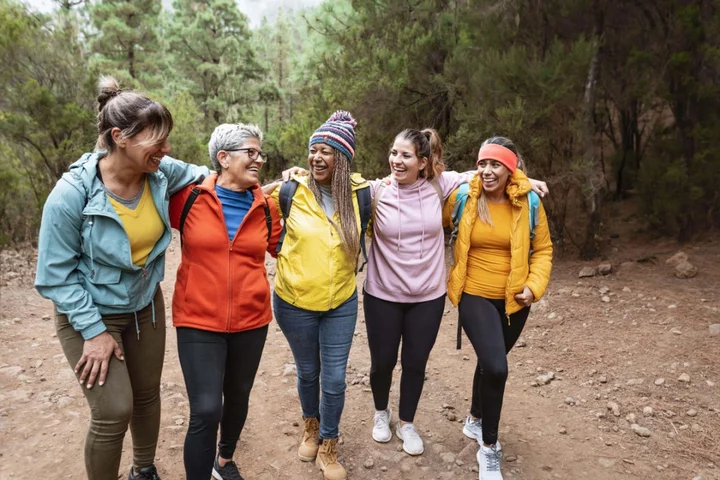
8 healthy habits to help you live longer – according to a new study
Eight habits that could help people live more than 20 years longer have been identified by researchers. While it’s long been known that certain lifestyle factors can influence lifespan, the American study isolated the eight factors that have the biggest impact – being physically active, being free from opioid addiction, not smoking, managing stress, having a good diet, not regularly binge drinking, having good sleep hygiene, and having positive social relationships. The research was presented at Nutrition 2023, the annual meeting of the American Society for Nutrition, and used data from 719,147 people enrolled in the Veterans Affairs Million Veteran Program. It found low physical activity, opioid use and smoking were associated with around a 30-45% higher risk of death, while stress, binge drinking, poor diet, and poor sleep hygiene were each associated with around a 20% increase, and lack of positive social relationships was linked with a 5% increased risk of dying. Men who had all eight habits at age 40 were predicted to live an average 24 years longer than men with none of the habits, according to the findings, and women with all eight habits in middle age were predicted to live an extra 21 years, compared with women with none of the habits. Xuan-Mai Nguyen, health science specialist at the Department of Veterans Affairs, said: “We were really surprised by just how much could be gained with the adoption of one, two, three, or all eight lifestyle factors. Our research findings suggest that adopting a healthy lifestyle is important for both public health and personal wellness. The earlier the better, but even if you only make a small change in your 40s, 50s, or 60s, it still is beneficial.” The researchers say the findings highlight how lifestyle factors contribute to chronic diseases such as type 2 diabetes and heart disease, which are associated with premature disability and death. How to embrace the eight healthy habits Inspired to give your own lifestyle a boost? “If making these small but mighty adjustments could help you to live for an extra 20 years, maybe it’s time to make those changes,” says life and wellbeing coach, Natalie Trice. She shares the following insights and tips… 1. Do more exerciseRegular exercise can help prevent a wide range of major diseases – plus it’s great for keeping stress levels in check. “Going for a walk, having a swim, running with friends, even just a good old dance-off in the kitchen can get your heartbeat up and those feel-good endorphins pumping – so get your trainers on and start moving,” says Trice. 2. Manage stressTrice suggests adopting simple stress-busting practices such as mindfulness meditation, and enjoying hobbies and sports. “These can profoundly impact overall wellbeing, as you bring your stress levels down,” she says. “This isn’t about pretending everything’s great, but rather looking at easy habits you can adopt that will take down the stress, which can lead to anxiety and burnout.” 3. Don’t smoke Quitting smoking is an essential step in improving health and potentially adding years to your life. Trice points out that while some people may think reaching for a cigarette takes the edge off their stress, there are healthier ways to cope. “Maybe going running or taking up yoga could be the release and focus you need, and one that will help you live longer, smell fresher and feel better,” she suggests. “Also, with the cost of cigarettes going up all the time, giving up will free up cash for the things in life that really need to be paid for.”If you are struggling to quit smoking, talk to your GP about options available to help. 4. Don’t binge drink“By cutting down on booze, you’re doing your body and brain a massive favour,” says Trice. “Drinking every night will impact your body and could affect your sleep and work performance. Enjoy life, but if you want to enjoy it for longer, then keep tabs on your drinking.” Official guidelines suggest drinking no more than 14 units of alcohol a week (equivalent to six medium glasses of wine of six pints of beer), spread across at least three days. 5. Eat healthily Generally speaking, a balanced diet that’s rich in fibre, whole grains, fruit and veg and lean protein, with heavily processed and sugary foods kept to a minimum, is linked with better health. “We all know about eating five-a-day but doing this can be tough if you’re busy with family and work. If you can start to do this, you’ll feel better,” says Trice. “Focus on eating regularly and thinking about what you put in your body, so that it works for you, not against you.” 6. Don’t take drugsRecreational drugs can harm health in a number of ways. Trice suggests those affected start by speaking to a trusted friend or their GP, and “look at the support which could not only extend your life, but save it”. 7. Try to get good sleep Trice says: “It’s vital that we look at getting a decent night’s sleep, as this can help you feel so much better. Making sure you have a sleep routine in place can be helpful and can be as easy as having no screens in the bedroom, having a bath or shower before you hit the sack, as well as making sure the temperature is right and you have curtains to keep the light out in the mornings.” 8. Nurture positive social relationshipsTrice observes: “If you’re able to nurture a supportive network of friends, colleagues and family, this can lead to improved mental and emotional wellbeing and a longer life.” Lacking social connections? Look at local volunteering opportunities and community walks and groups. Making friends can take time, but even finding ways to regularly spend time and interact with others can help. Read More Charity boss speaks out over ‘traumatic’ encounter with royal aide Ukraine war’s heaviest fight rages in east - follow live George Alagiah: What are the signs of bowel cancer? Carol Vorderman says she no longer sunbathes after health scare Carol Vorderman: Why my skin cancer scare means I no longer sunbathe
2023-07-24 21:51

George Alagiah: What are the signs of bowel cancer?
BBC newsreader George Alagiah has died at 67 after being diagnosed with bowel cancer. Bowel cancer is the fourth most common cancer in the UK and leads to around 16,800 deaths every year. More than nine out of 10 cases of bowel cancer develop in older adults over the age of 50, and nearly six in 10 are in people aged 70 or older. Alagiah was first diagnosed with stage four (advanced) bowel cancer in 2014. By the age of 66, it had spread to his lungs, liver, spine and lymph nodes. The three main symptoms of bowel cancer are having persistent blood in the stools, an ongoing change in bowel habit (such as needing to go more often or suffering the runs) and persistent lower abdominal pain, bloating or discomfort. A loss of appetite may also occur, or somebody may suffer significant, unintentional weight loss. Several things are known to increase the risk of bowel cancer, though they cannot explain every case. These include a diet high in red or processed meats and low in fibre, being overweight or obese, not taking enough exercise and drinking too much alcohol. Being a smoker and having a family history of the disease can also push up the risk. Some people also have an increased risk of bowel cancer because they have another long-term condition, such as extensive ulcerative colitis or Crohn’s disease. Bowel cancer screening is currently widely offered to people aged 60 to 74 who are sent a home stool kit every two years. Those aged 75 and over can ask for a kit every two years by phoning the free bowel cancer screening helpline on 0800 707 60 60. Bowel cancer can be very difficult to treat in its later stages. But in the early stages, tumours can often be removed through surgery. The main treatments for bowel cancer include chemotherapy, radiotherapy and targeted drugs, which depend on the genetic make-up of the tumour. One in 15 men and one in 18 women will be diagnosed with bowel cancer during their lifetime. Expert predictions are that 53,646 cases of bowel cancer (29,356 in men and 24,290 in women) will be diagnosed in the UK in 2035. Read More Charity boss speaks out over ‘traumatic’ encounter with royal aide Ukraine war’s heaviest fight rages in east - follow live Carol Vorderman says she no longer sunbathes after health scare Carol Vorderman: Why my skin cancer scare means I no longer sunbathe This is how often you should actually change your razor
2023-07-24 20:27

The bowel cancer symptom George Alagiah wished he’d caught earlier
BBC presenter George Alagiah has died at the age of 67, after nearly a decade of living with bowel cancer. The newsreader was first diagnosed in 2014. He underwent several rounds of treatment after the cancer returned and spread over the last few years. In a statement, his agent Mary Greenham said: “George fought until the bitter end but sadly that battle ended earlier today. George was deeply loved by everybody who knew him, whether it was a friend, a colleague or a member of the public. “He simply was a wonderful human being. My thoughts are with Fran, the boys and his wider family.” Earlier this year, Alagiah opened up about a symptom he wished he had caught earlier. He was taking part in an NHS campaign to encourage the wider public to take up its bowel cancer screening program. He urged people who have received a free test kit from the health service “not to ignore it” because it “could save your life”. “Had I been screened, I could have been picked up. I would have been screened at least three times and possibly four by the time I was 58 and this would have been caught at the stage of a little polyp: snip, snip,” he said at the time. Alagiah received his diagnosis after complaining of blood in his stools. He underwent 17 rounds of chemotherapy and five operations to treat the disease, which eventually spread to his liver and lymph nodes. He supported a campaign by Bowel Cancer UK and Beating Bowel Cancer to make cancer screening available to everyone in England from the age of 50. Currently, screening is available to everyone aged 60 to 74, but the NHS is expanding to include everyone aged 50 to 59 years old. Around 42,000 people are diagnosed with bowel cancer every year in the UK, with 90 per cent of diagnoses made in people over the age of 50. It the fourth most common cancer and the second biggest cancer killer, leading to around 16,800 deaths every year. The three main symptoms of bowel cancer include having persistent blood in the stools; an ondoing change in bowel habits, such as needing to go more often or having diarrhoea; and persistent lower abdominal pain, bloating or discomfort. Some patients may also experience a loss of appetite, or significant, unintentional weight loss. According to Cancer Research UK, another potential symptom is tenesmus, which is the feeling of having to defecate without having stools, or experiencing pain upon defecation. Studies have found that several factors could potentially increase the risk of bowel cancer, although they cannot explain every case. These include a diet high in red or processed meats and low in fibre; being overweight or obese; not exercising often enough; and drinking too much alcohol. Smoking and having a family history of the disease can also increase the risk. Some people with long-term conditions like extensive ulcerative colitis or Crohn’s disease may also have an increased risk of bowel cancer. Bowel cancer can be treated with surgery, which may be paired with chemotherapy, radiotherapy or biological treatments. Catching the cancer at an early stage greatly improves chances of survival. However, the NHS states that if a cancerous tumour cannot be removed completely through surgery, then a cure may not be possible. For more information about treatment for bowel cancer, visit the NHS here and Cancer Research UK here. To speak to a Cancer Research UK nurse, you can call 0808 800 4040. The helpline is free and open from Monday to Friday, from 9am until 5pm. Additional reporting by PA Read More George Alagiah death: BBC newsreader dies aged 67 after bowel cancer diagnosis ‘One of the best and bravest’: George Alagiah obituary as long-serving BBC newsreader passes away ‘It’s not the doom and gloom you might think’: Jonnie Irwin details experience with palliative hospice care
2023-07-24 20:22
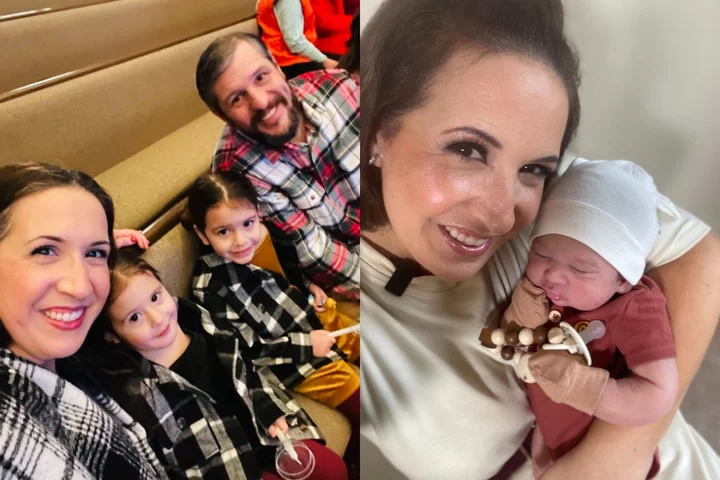
Mum’s husband fired from family business after she roleplayed with reborn dolls
A woman who turned to roleplaying with hyper-realistic dolls “to help (her) cope” with the death of her first baby – and continues to do so with her husband and two rainbow babies – has said her husband’s parents disapproved of the hobby and fired him from the family business as a result. Christina Keeler, 38, a stay-at-home mum and YouTuber, from Wyalusing, Pennsylvania, USA, fell pregnant with her first “miracle” baby in 2015, despite having endometriosis and being told she would not be able to conceive in her 20s. She suffered a miscarriage, but after watching a documentary about so-called reborn dolls, she had a “lightbulb moment” and realised getting a hyper-realistic doll would be the “perfect solution”. Christina’s husband Bill, 43, was “hesitant” at first but became supportive after he saw how much it “helped (her) grief”. The couple went on to have two “miracle” daughters, Grace, six, and Joy, four, who now help feed, change and dress the family’s five reborn dolls – which cost between £1,560 and £3,899 each – in their “nursery” complete with “a crib and a wardrobe”. The family often take the dolls out in public, and have shared their journey on YouTube – where Christina documents people’s reactions to her dolls and birthing videos. Some silicone dolls come in a fake womb which allows a Caesarean section to be performed at home. But Bill’s family were “disgusted” with the hobby, to the point where they gave him a choice to stop having the dolls or leave the family business. He refused to shut down the YouTube channel and did not want Christina to give up her hobby, so he was fired. She fell pregnant with her first baby in 2015, a year after her mother died of cancer. The couple were “elated” about the pregnancy because Christina had been told in her twenties that she would not be able to conceive because she has endometriosis, but she miscarried at eight weeks. Christina told PA Real Life: “When we lost the baby it was so devastating, I remember lying in the hospital bed after they had taken the baby out of my belly, and screaming for my mum and wept wanting to cuddle my baby.” She “really struggled” with the grief of losing her mother and her baby so close together. She explained: “This feeling of sorrow just never went away, it was so painful that I never talked about it again.” Despite having her two “miracle” children Grace and Joy, Christina still longed to hold her first baby, and after watching a documentary about reborn dolls, she wanted to get one to see if it would help her grief. She said: “I felt so blessed to have two healthy girls, but that feeling of missing the first baby never quite went away. “When my youngest was around two years old, my husband and I came across a documentary about reborn dolls. “And he was like, ‘That’s really weird’, and I played it off that I thought the same, but actually I really wanted one to help me cope and I thought it would be the perfect solution.” After persuading her husband, Christina ordered her first lifelike doll, Hannah, costing her around £155. She said: “I told my husband and he was not on board at all, he was hesitant, but after explaining my reasoning, he was much more understanding and more accepting.” When the doll arrived, Christina instantly felt like it helped with her mourning. She said: “It helped me therapeutically because for the first time ever when I got my first reborn doll, I was able to talk about the loss of our baby. “And since then I have healed tremendously from that loss because I’m able to talk about it and share my story and help others – it helped my grief, for sure.” Christina now has a collection of five dolls called Carter, Cadence, Quinn, Isabella and Sammy, which she loves to dress, cuddle and feed. She takes the dolls out in public and people often mistake them for real babies. She said: “We have a nursery for them with a crib and a wardrobe. I check on them throughout the day, and on other days, especially when the girls want to get involved, I pick out an outfit for them, bring them to breakfast, get them to feed them a bottle, change them. “If we’re running errands we often take them out with us and put them in a car seat and stroller.” Christina and her family have been sharing their experiences on YouTube, where they are known as The Reborn Family. She said: “I make videos about people’s reactions to my dolls, as well as vlogs and birthing videos – I have some silicone reborn dolls which come in a womb and you perform a C-section on it at home, to give birth to the baby.” Despite her immediate family being supportive of the hobby, Christina admits not everyone in her wider family understands. She said: “My husband’s family were, and still are, disapproving of the reborns, even though they can see how much they helped me. They were disgusted. “We moved from California to Pennsylvania because my husband was next in line to take over the family business because they were about to retire, and they asked if we would like to do so and we agreed. “When they were on vacation they came across our YouTube channel, and they called us up and they were mortified and so embarrassed, and said we were ruining the family name.” When Bill’s parents came home, they gave him an ultimatum to stop having the dolls. Christina explained: “Bill said that he was not going to quit his job, and didn’t want me to stop having reborns because they were so therapeutic for me at the time, and his dad said, ‘Well, then you’re fired’.” My husband’s family were disgusted, they said we were ruining the family name Bill’s father was contacted by PA Real Life for comment, but he had not responded at the time of publication. Even though her reborns have caused tension in the family, Christina cannot see herself giving up her hobby any time soon. She said: “Reborns continue to help me with my grief, and I love sharing content with other people who have lost babies, and they can also really help people with dementia, people who are infertile, people with anxiety and depression, I wouldn’t want to stop this.” Read More Teenager who thought she was pregnant diagnosed with ovarian cancer Woman praised for response to parents who asked her to swap first class seat with their child Barbie vs Oppenheimer: Greta Gerwig makes history with biggest box office opening for a female director Charity boss speaks out over ‘traumatic’ encounter with royal aide Ukraine war’s heaviest fight rages in east - follow live
2023-07-24 19:24
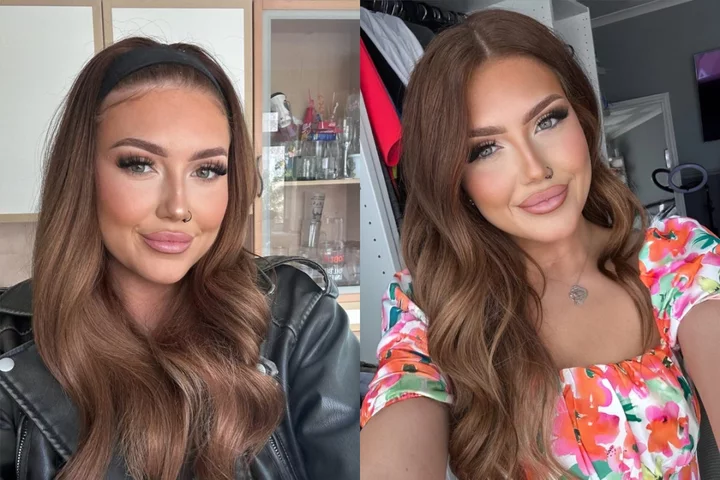
Teenager who thought she was pregnant diagnosed with ovarian cancer
A teenager who thought she was pregnant after her stomach unexpectedly became rounder, and who was told it was constipation by her GP, was later diagnosed with ovarian cancer and is now a student nurse after realising “life is too short”. Summer Edwards, 22, a student nurse at the University of the West of England, from Bristol, went from a size six to size 10 “in a matter of weeks” and thought she was pregnant in 2020, but her GP reassured her that it was constipation. After trying strong doses of laxatives and having two catheters fitted, nothing improved, and she was eventually diagnosed with an ovarian cyst which doctors were able to remove successfully. However doctors then found an extremely rare 19cm by 17cm tumour and Summer was diagnosed with stage one ovarian cancer. Summer had keyhole surgery to remove it, which was a success, but she also found out she had a rare gene, DICER1, which meant she was more susceptible to other types of cancer. Six members of her family have since been diagnosed with the gene, including her 16-year-old cousin who now has lung cancer, but Summer says she is a “fighter”. Since Summer was diagnosed with cancer she has been training as a student nurse, which is something she has “always” wanted to do. In May 2020, at the age of 18, while working in a hospital as a healthcare assistant, Summer began to notice her stomach was getting rounder, but put it down to eating a few extra treats at work. She said: “My mum was convinced I was pregnant, and I began to believe it, but I took a pregnancy test and it came back negative. “I went from a size six to size 10 in a matter of weeks, and one day I was in the garden in a bikini and my mum said that she thought something was really wrong because my stomach was really round.” To reassure her mum, Summer went to her GP and was prescribed a strong dose of laxatives, as they thought she was constipated. But after two weeks of taking the medication nothing changed, so Summer was called in to her GP surgery. Summer said: “The doctor felt my stomach and they said something was not right, but I didn’t think much of it.” Summer also had blood tests, and spotted that her blood was being run for a CA-125 test, a tumour marker for ovarian cancer, and a few days later was asked to have an internal ultrasound, where she was told her bladder was “completely full” with more than a litre of urine. Doctors told Summer there was “nothing they could do at that point” so, after asking her doctor friend for advice, she went straight to A&E and had a catheter fitted. She said: “I was devastated, I was only 18 and I really didn’t want to be walking around with a catheter strapped to my leg or be signed off work for 12 weeks.” After a few days of being catheterised, Summer continued urinating as usual, so she returned to the hospital and had another fitted. But the following day she began experiencing a great deal of pain. She said: “It was weird, I went to the toilet and I noticed a lot of blood in the bag, and I was still weeing. “I was taken into hospital – at this point, I was screaming in pain.” Summer then had a CT scan, and it was found that her bladder was never full – instead, she had a large ovarian cyst which was successfully removed with surgery. But two weeks later Summer went for her post-operation check-up and was told she had a 19cm by 17cm tumour. She said: “They told me I had a Sertoli-Leydig cell tumour, which was really rare. “They told me there was only one other person in the UK that had it at that point and my blood tests came back fine on the CA-125 marker because it causes a boost in testosterone so didn’t show as a marker. “It didn’t sink in at all, and the first thing I did was take my sick note to work – I was gutted I couldn’t work. “When I told people there, they cried, so I did too, but it didn’t hit me for a while.” On July 1 2020 Summer had a hospital appointment to find out more about her tumour, and to her devastation she found out she had ovarian cancer. She said: “They explained more about my tumour, and that there have not been any clinical trials for it because it’s so rare. “I put it bluntly and asked them if I had cancer and they said yes. “My mum was upset about it more than me – I think it’s more scary for those around you.” About two weeks later Summer had keyhole surgery to remove the tumour, which was a success. She said: “I was so relieved, and in my post-op review they asked me if I wanted preventive chemotherapy and I said no, as the pros outweigh the cons for me. “I’d rather live my life now and deal with chemotherapy in the future if it ever comes back.” Since then Summer has had internal ultrasounds every three months, which will continue for the next ten years. She has also been genetically tested, and she was diagnosed with DICER1 syndrome – an inherited disorder that increases the risk of cancerous tumours, most commonly in the lungs, kidneys, ovaries and thyroid. Summer said: “I now know that if I have kids, they will probably have the gene, and I’ve looked into IVF and PGD (preimplantation genetic diagnosis) but there is no licence to test for DICER1, I’d have to go and ask for one to be made. “I know that I’m probably more likely to get another type of cancer in the future too.” Summer’s immediate family tested negative for the gene, but when Summer’s aunt came to one of her appointments with her, she believed her daughter, Summer’s 16-year-old cousin, had the gene. Summer said: “After tests, my aunt and five of her children have the gene, and one of them has lung cancer but she’s a fighter.” Now Summer is a student nurse – she has “always wanted” to work in healthcare, and has been doing so since she was 17, but when she received her cancer diagnosis it pushed her to apply for university. She said: “My tutors are amazing and I have had time off for scans and things, but I absolutely love it. “Having the diagnosis made me realise there’s no time to wait and life is too short.” For more information, visit: targetovariancancer.org.uk/ or www.nhs.uk/conditions/ovarian-cancer/. Read More Teenager who thought she was pregnant diagnosed with ovarian cancer Jonnie Irwin details experience with palliative hospice care Carol Vorderman shares warning to sunbathers after skin cancer scare Jonnie Irwin details experience with palliative hospice care Carol Vorderman shares warning to sunbathers after skin cancer scare This is how often you should actually change your razor
2023-07-24 18:56
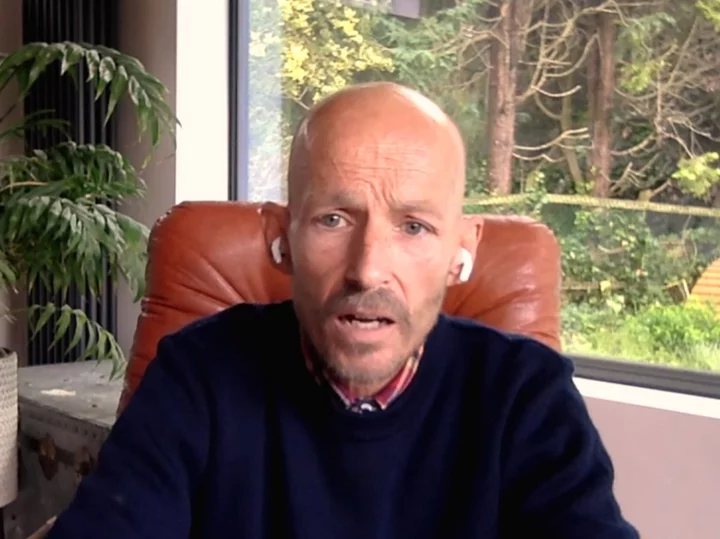
‘It’s not the doom and gloom you might think’: Jonnie Irwin details experience with palliative hospice care
Jonnie Irwin has spoken out about his “really good” experience with palliative care in a hospice, amid his journey with terminal cancer. The A Place In The Sun presenter, 49, appeared on BBC Morning Live on Monday (24 July) and gave viewers an update on his current health and treatment. Reassuring hosts Gethin Jones and Helen Skelton that his family is doing “great and very noisy”, Irwin was asked about his experience with palliative care, which focuses on improving the quality of life for anyone facing a life-threatening condition. Irwin said that he has been in palliative care since the day he received his terminal cancer diagnosis. He was first diagnosed with lung cancer in August 2020, but only publicly shared the news in November 2022 after it spread to his brain. He described his hospice experience as a “delight”, adding that his initial perception of such facilities were that they were “very much a boiling hot room full of people who looked frail and towards the end of their days”. However, it was “nothing of the sort” when he did actually go in. “It’s spacious, energised, comfortable,” Irwin told the show, adding: “I’ve had a really, really good experience at my hospice.” He urged anyone who is facing a terminal diagnosis to “embrace” end-of-life care and to try going to a hospice if they have been offered the choice. “My first experience of palliative care and hospice was blood transfusions,” he explained. “I had my first blood transfusion in hospital and then was invited to use the hospice, so I have it a go as a day patient and went into a lovely room. “I implore people to check out hospices. If you’ve got the choice of using it, then use it… I encourage people to explore that option because it’s not the doom and gloom operation you might think it was.” In June, Irwin made a rare red carpet appearance at the Television and Radio Industries Club (TRIC) Awards and said he is taking “every day as a gift as it comes”. When he first revealed his terminal cancer diagnosis, the Escape To The Country host said he “doesn’t know how long” he has left to live, but hopes he will inspire people to “make the most of every day”. He also celebrated his “best ever” Father’s Day last month with his three sons, Rex, four, and twins Rafa and Cormac, three, with wife Jessica Holmes. Irwin recently revealed that sometimes he has to “remove himself” from his family home to go to a hospice when he is in a lot of pain because it makes him “not good to be around”. He told Hello! magazine: “I’m like a bear with a sore head and I don’t want [my family] to be around that.” In another appearance with podcast OneChat previously, he said that being in pain affects his mood, explaining: “I have been close to death’s door, twice at least. You lose your memory, you lose your patience. I have got a very short temper. It’s not made me a better person, that’s for sure.” Read More Ruth Handler: The Barbie inventor who revolutionalised prosthetic breasts and narrowly avoided prison Fans defend Prince Harry and Meghan Markle amid breakup rumours Tim Shaddock rescue: Ben Fogle offers to pay for Australian sailor and dog to be reunited after emotional separation Carol Vorderman shares warning to sunbathers after skin cancer scare This is how often you should actually change your razor Are we working out too hard?
2023-07-24 17:22
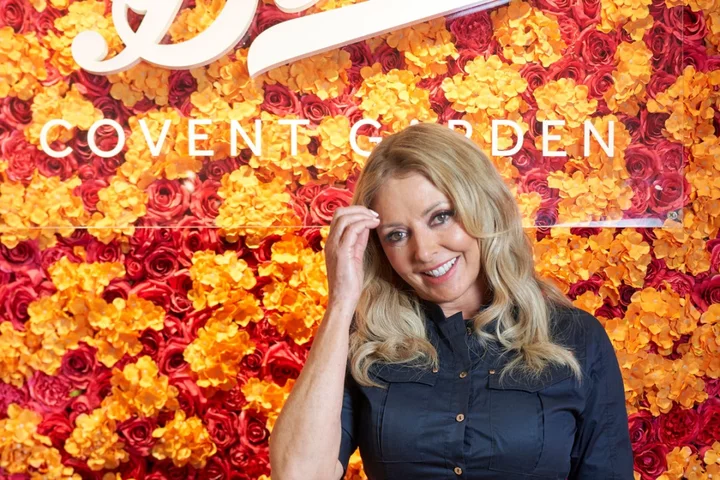
Carol Vorderman shares warning to sunbathers after skin cancer scare
Carol Vorderman was well and truly a sun worshipper growing up. “Oh God, yes. I was burning away merrily for many, many years,” she remembers with a groan. The former Countdown presenter, 62, says her generation was the first to really become obsessed with the sun. “I’m of the generation where we started to sunbathe – my mother’s generation didn’t. We were also caught in the formative years, the 60s, 70s, 80s, where we had absolutely no idea of what sun protection was – you just couldn’t buy it. I think it was the 90s that began,” she explains. “So in all of our youth we were encouraging each other to sunbathe doused in cooking oil.” Vorderman remembers the ways people would try and boost their tan – from sunbathing surrounded by metal foil (so you could “get all the rays of the sun” and “burn nicely”) to discovering sunbeds (“we thought they were marvellous”) – and she was particularly keen on soaking up as much of the sun as possible, as she grew up by the sea. She says anyone her age “will remember all that”, but now “we know the dangers”. Vorderman is unsurprised by Cancer Research UK’s latest statistics, showing melanoma skin cancer cases in the UK have reached an all-time high. According to the charity, 17,500 cases are diagnosed every year, with projections suggesting the numbers could increase by 50% over the next 20 years. Research suggests people around Vorderman’s age are increasingly affected, with the probability of people aged 55 and older getting skin cancer almost tripling since the 1990s. Bristol-based Vorderman herself had a scare when she was around 50. She was concerned by some changes in her skin, so went to see a dermatologist – who sent off a biopsy for testing, with results revealing the cells were precancerous. The presenter is at pains to emphasise she doesn’t want people to feel sorry for her – “I had no symptoms, nothing like that” and the cells were removed – but she’s instead trying to highlight how crucial it is to be sun safe. “What I do now is I’ve had a check-up every year, all over, ever since,” she says – and that isn’t the only change she’s made. “I slather myself in SPF at all opportunities. In many ways, the damage is already done, but I don’t sunbathe now, or I cover myself up.” Vorderman has teamed up with Boots brand Soltan and Macmillan Cancer Support on a sun-safety campaign, and her efforts to raise awareness around the issue aren’t just inspired by her own experiences. Her mother died in 2017 after suffering from three types of cancer – the third being melanoma. “Not a single time in her life did she sunbathe – my mum had a different skin to me, she had moles, I don’t,” Vorderman says. “I know that makes you much more prone to melanomas.” Cancer Research UK cites a study that found melanoma risk was higher in people with more than 100 moles compared with people who have fewer than 15 moles. For Vorderman, talking about these issues, whether publicly or among friends, is key. “It’s part of life. The more we talk about it, the better it is – as with everything. It’s like talking about the menopause, talking about women’s issues, talking about all sorts of cancers… As we know with all cancers, the sooner you can have something checked, the better the outcome should be.” Vorderman has in recent years made a name for herself for posting her unfiltered political beliefs on social media, and whether it’s talking about politics or causes close to her heart, she won’t back down. “I’ve always been pretty confident, but now you get to a point in life where you think – I feel strongly about things as they stand in this country at the moment. I’ve never known anything as bad. I think everyone should speak out.” She believes in the old saying: ‘The only thing necessary for evil to triumph is for good people to say nothing’, adding: “I take that with me.” Read More Charity boss speaks out over ‘traumatic’ encounter with royal aide Ukraine war’s heaviest fight rages in east - follow live Carol Vorderman: Why my skin cancer scare means I no longer sunbathe This is how often you should actually change your razor Are we working out too hard?
2023-07-24 17:18
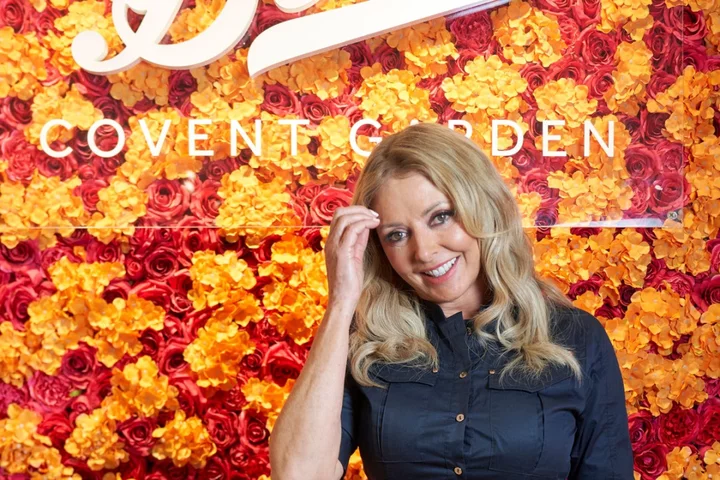
Carol Vorderman: Why my skin cancer scare means I no longer sunbathe
Carol Vorderman was well and truly a sun worshipper growing up. “Oh God, yes. I was burning away merrily for many, many years,” she remembers with a groan. The former Countdown presenter, 62, says her generation was the first to really become obsessed with the sun. “I’m of the generation where we started to sunbathe – my mother’s generation didn’t. We were also caught in the formative years, the 60s, 70s, 80s, where we had absolutely no idea of what sun protection was – you just couldn’t buy it. I think it was the 90s that began,” she explains. “So in all of our youth we were encouraging each other to sunbathe doused in cooking oil.” Vorderman remembers the ways people would try and boost their tan – from sunbathing surrounded by metal foil (so you could “get all the rays of the sun” and “burn nicely”) to discovering sunbeds (“we thought they were marvellous”) – and she was particularly keen on soaking up as much of the sun as possible, as she grew up by the sea. She says anyone her age “will remember all that”, but now “we know the dangers”. Vorderman is unsurprised by Cancer Research UK’s latest statistics, showing melanoma skin cancer cases in the UK have reached an all-time high. According to the charity, 17,500 cases are diagnosed every year, with projections suggesting the numbers could increase by 50% over the next 20 years. Research suggests people around Vorderman’s age are increasingly affected, with the probability of people aged 55 and older getting skin cancer almost tripling since the 1990s. Bristol-based Vorderman herself had a scare when she was around 50. She was concerned by some changes in her skin, so went to see a dermatologist – who sent off a biopsy for testing, with results revealing the cells were precancerous. The presenter is at pains to emphasise she doesn’t want people to feel sorry for her – “I had no symptoms, nothing like that” and the cells were removed – but she’s instead trying to highlight how crucial it is to be sun safe. “What I do now is I’ve had a check-up every year, all over, ever since,” she says – and that isn’t the only change she’s made. “I slather myself in SPF at all opportunities. In many ways, the damage is already done, but I don’t sunbathe now, or I cover myself up.” Vorderman has teamed up with Boots brand Soltan and Macmillan Cancer Support on a sun-safety campaign, and her efforts to raise awareness around the issue aren’t just inspired by her own experiences. Her mother died in 2017 after suffering from three types of cancer – the third being melanoma. “Not a single time in her life did she sunbathe – my mum had a different skin to me, she had moles, I don’t,” Vorderman says. “I know that makes you much more prone to melanomas.” Cancer Research UK cites a study that found melanoma risk was higher in people with more than 100 moles compared with people who have fewer than 15 moles. For Vorderman, talking about these issues, whether publicly or among friends, is key. “It’s part of life. The more we talk about it, the better it is – as with everything. It’s like talking about the menopause, talking about women’s issues, talking about all sorts of cancers… As we know with all cancers, the sooner you can have something checked, the better the outcome should be.” Vorderman has in recent years made a name for herself for posting her unfiltered political beliefs on social media, and whether it’s talking about politics or causes close to her heart, she won’t back down. “I’ve always been pretty confident, but now you get to a point in life where you think – I feel strongly about things as they stand in this country at the moment. I’ve never known anything as bad. I think everyone should speak out.” She believes in the old saying: ‘The only thing necessary for evil to triumph is for good people to say nothing’, adding: “I take that with me.” Broadcaster and author Carol Vorderman MBE is working with Boots brand Soltan, which is joining forces with Macmillan Cancer Support for the second year running, as its official sun-safety partner.
2023-07-24 16:46
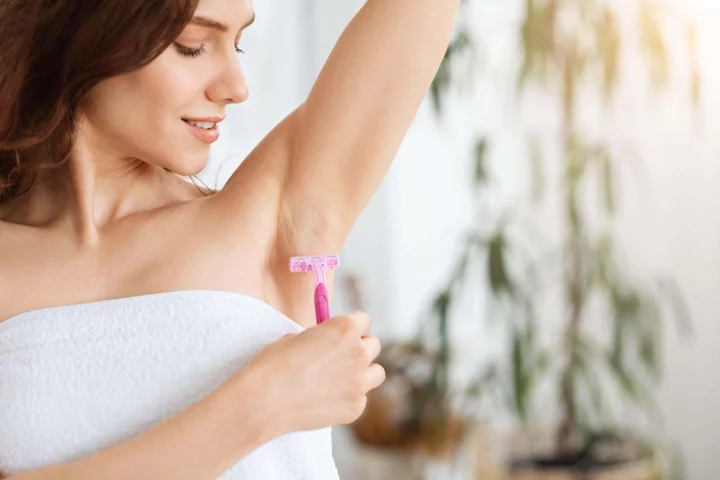
This is how often you should actually change your razor
Reckon you could get another shave out of your razor? We’ve all done it, wondering how long we can actually use one, as we whip it out again and again. Well, it may not be worth the risk to your health, according to dermatologist and Dove expert, Dr Cristina Soma. So, how often should you change your razor? “More people cling on to their razors for much longer than is advised, and are surprised when we recommend that a razor is changed every five to seven shaves,” says Soma. “The frequency of change also depends on other factors, such as how frequently and how many areas you shave, your hair thickness and type, the quality of your blade, and whether you are good at washing it off afterwards and looking after your blade.” What happens if you don’t? “Most of us own a dull blade full of skin cells, soap and hair debris. In the worst cases, you can also see rust on the blade,” Soma says. “When all this grime accumulates and the blade dulls, you are less likely to get a close, smooth shave, and more likely to cut yourself. Bacteria can accumulate on the blade and have some serious consequences, too. “Using a dull razor blade can result in shaving rash and bumps, ingrown hairs, and inflamed or traumatised skin. More seriously, it can result in cuts and possibly lead to infections,” she explains. Infections “You could get any kind of infection from using an old, unsharp razor. After a while of using the same blade, bacteria starts to grow, which will create irritation on your underarms,” she explains. Shaving armpits, pubic hair and legs may cause real issues. “The most common form of infection would be a bacterial skin infection, with symptoms including redness, swelling, pain or pus. Treatment for this would be an antibiotic ointment. “To really care for your underarms, you need to change your razor frequently, use a shaving cream or gel, shave in the direction of hair growth and rinse the blade thoroughly, then store it in a clean, dry place. “Furthermore, the underarm area is very delicate, so take care in choosing a deodorant that supports the skin barrier,” explains Soma. Resistance and irritation If you feel any resistance when shaving with an old razor, it could cause an issue. “If you can feel your razor tugging at your hair, rather than gliding over it smoothly, it’s likely blunt and will cause skin irritation, razor burn and ingrown hairs,” says Dr Tim Clayton, consultant dermatologist at Pall Mall Medical in Manchester. “Ingrown hairs can lead to bacterial infections, hyperpigmentation and keloids [a type of raised scar] so it’s important to avoid these where possible,” he says. Rust If you see a hint of orange on there, it isn’t worth using. “Tetanus can be spread via a wound caused by a rusty object, but it isn’t the rust that will cause tetanus – it’s the bacteria on the razor. “If you’re concerned about contracting tetanus, make sure you’re up to date with your tetanus vaccinations,” says Clayton. Concerns about cost In a 2021 International Journal of Women’s Dermatology study, women’s four-blade razors were priced 66% higher than men’s, who may be less inclined to shave their bodies. So, if changing your razor is costly, it may be worth considering your relationship with your body hair. “There is no hygiene benefit to shaving your body hair. What you choose to do is completely up to you,” says Soma. “Increasingly, we are seeing more acceptance and diversity in what people do with their hair, and from a medical standpoint, as long as you’re doing it in a hygienic and safe way, carry on.” Read More Charity boss speaks out over ‘traumatic’ encounter with royal aide Ukraine war’s heaviest fight rages in east - follow live Are we working out too hard? How to perk up urban balcony gardens and window boxes Sadiq Khan and Romesh Ranganathan: Women still aren’t equal in politics and comedy
2023-07-24 16:21
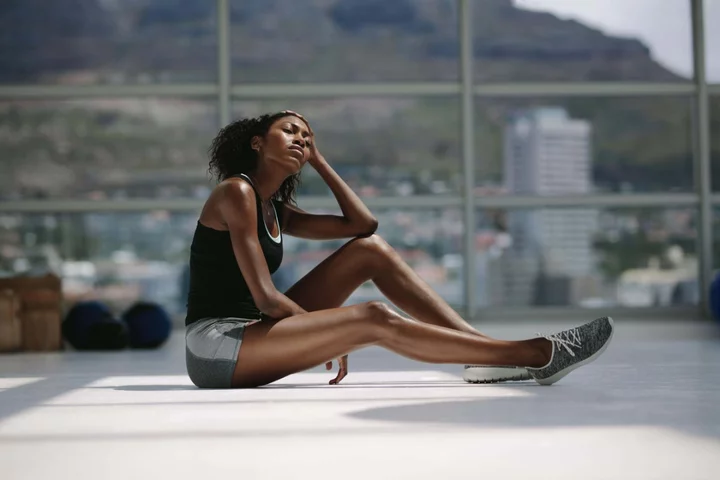
Are we working out too hard?
There’s a reason high-intensity interval training (HIIT) is so popular – it’s designed to give you a killer workout in a short amount of time. HIIT classes are short, sharp bursts of exercises where you’re working out above 85% of your maximum heart rate, and Sean Johnson, regional fitness manager at Orangetheory Fitness, can see why they’re “tempting”. “A lot of people are pressed for time and seek a ‘quick fix’. To many people, the assumption is ‘no pain, no gain’ and so therefore seek out a hard-hitting, pulse-shattering workout to undo the unhealthy habits they may have gotten themselves into,” he says. “A hard workout can feel very rewarding when you move fast and blast around for a short time.” Plus, there are benefits to HIIT training, with Johnson saying: “A shorter, more intense workout does have the ability to elicit a longer afterburn compared to a less intense longer workout.” But is there a chance we’re overdoing it, in a bid to ‘get the most’ out of our workouts? There’s a growing trend for lower intensity exercise – often using a heart rate monitor so you can track where you’re at – which might provide a whole host of benefits, without making you feel a bit sick. Signs you might be overdoing it “Working at a maximal heart rate can sometimes cause people to feel lightheaded, dizzy, faint and nauseous. This isn’t very fun and can also deter people from coming back,” suggests Francesca Sills, exercise physiologist at Pure Sports Medicine. Johnson agrees: “Working out for too long at an intensity that is too high can put numerous stresses on the body such as fainting, vomiting and even serious cardiovascular and respiratory health issues.” A heart rate monitor can help you track how hard you’re pushing yourself, but if you don’t have one, Johnson recommends going by “feeling”. Orangetheory uses three terms to define your perceived exertion: “Base pace is a ‘challenging, but doable’ feeling, push pace is an ‘uncomfortable feeling’ and all out is an ‘empty the tank feeling’,” Johnson explains. He doesn’t recommend spending more than a minute in the ‘all out’ section, and other signs you might be overdoing it include “fatiguing earlier than you normally do, dizziness, light headed, you get injured or have joint and muscle pain regularly”. Downsides to HIIT? Sills suggests there aren’t necessarily downsides to HIIT, just “things to be wary of”. She says: “If you’re working very hard for a long time or for longer than you are used to, it’s possible that you’ll finish the session feeling unwell rather than energised.” Johnson says there is the risk of overtraining with regular HIIT classes. “In the shorter term, working out at an intensity too high can stress your adrenal glands and stimulate the release of cortisol (the stress hormone). In turn, this can have numerous side effects such as increased blood pressure, increased heart rate, encourage fatigue and ultimately hinder recovery. “If your body cannot recover properly, you will find it hard to get into a regular routine with your fitness and will see a lack of results.” The benefits of slowing down Johnson suggests incorporating lower-intensity exercise into your routine can improve your everyday life. “Doing workouts that don’t raise your heart rate to the extremes can help reduce the risk of injury (and risk of falls and trips), reduce fatigue and pain, elevate your mood, improve sleep quality, while still helping to burn calories,” he says. Sills mentions how ‘zone two’ workouts are a “hot topic” in the fitness world recently – this is a type of low-intensity, sustained exercise where you’re working at around 65-75% of your maximum – for example, going for a gentle jog where you can still hold a conversation. She says these types of workouts are gaining popularity because of the “large amount of benefit it brings to the health and efficiency of your cardiovascular and metabolic systems”. If you’re used to leaving it all on the floor with an intense workout every time you hit the gym, it can be tricky to know how to slow down. Johnson recommends using the ‘FITT principle’ to adjust your exercise routine: Frequency: Instead of doing your four workouts next week try doing only threeIntensity: Do your normal four workouts, but take it down a notch in each one.Time: Instead of doing four x 90 minute workouts next week, maybe try doing four x one hour workouts.Type: Switch it up and use different equipment or style of workout. Johnson adds: “Having slower days will enable you to focus more on the form and technique, which transfers over to the high intensity days as well.” Doing HIIT safely While it’s a good idea to mix up your workouts with different intensities, there are a few things you can do to make sure you don’t overdo it in HIIT. Sills recommends ensuring “you are eating well to fuel your body for performance”, and “get on top of your sleep routine to allow your body to rest and repair”. If you’re a newbie to exercise, she wouldn’t necessarily recommend a HIIT class immediately: “If you haven’t done much training before, it’s important to learn how to do things right and build a good base level of strength and fitness before going in and smashing yourself. If you aren’t sure how to perform exercises well when you’re fresh, you aren’t setting yourself up for success when you’re fatigued.” And finally, she says: “It’s important to work within your own limits. Often these classes are busy, loud and intense and people can be encouraged to continue to do more weight, more reps, etc. Issues arise when people push too far beyond what they can manage. Instead of working at a 10/10 all the time, drop it back to an eight to nine.” Read More Charity boss speaks out over ‘traumatic’ encounter with royal aide Ukraine war’s heaviest fight rages in east - follow live How to perk up urban balcony gardens and window boxes Sadiq Khan and Romesh Ranganathan: Women still aren’t equal in politics and comedy SPF cocktailing: Why you should steer clear of the buzzy TikTok trend
2023-07-24 15:47
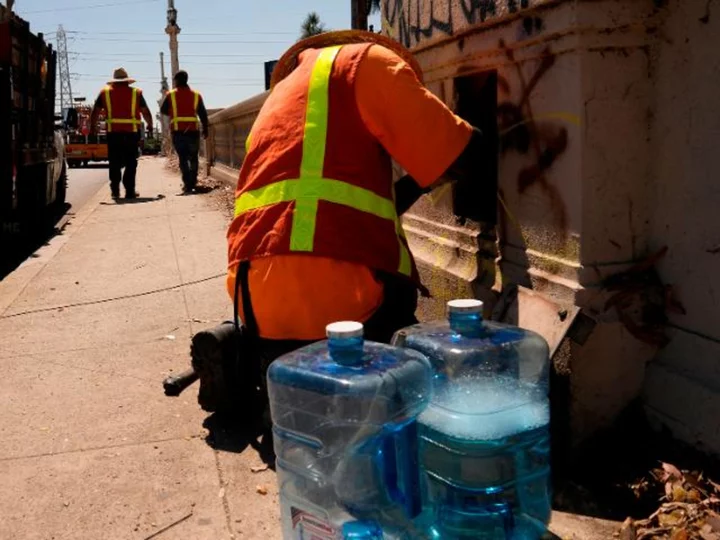
'It comes up on you fast:' Scorching heat is crushing American businesses
A 119-degree day in Phoenix hits like a blast of hot air from the oven with no relief in sight, and for a business owner like Lyn Thomas, there's hardly any avoiding it.
2023-07-23 22:29
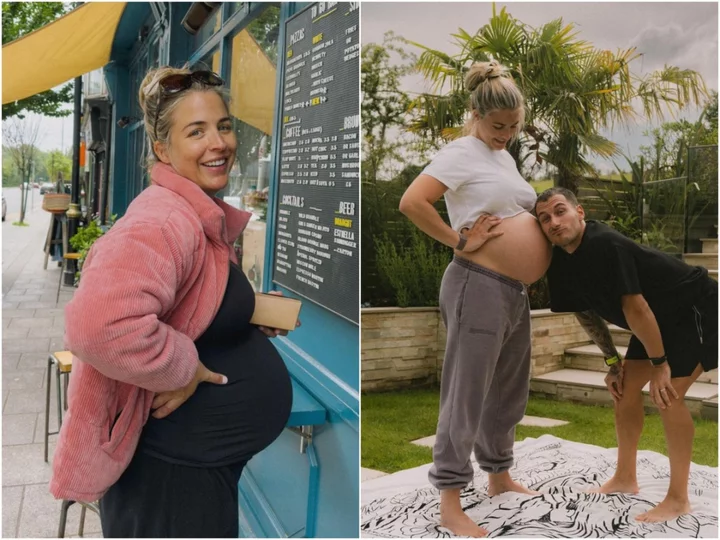
Gemma Atkinson and Gorka Marquez share newborn son’s sweet name and first photo
Gemma Atkinson has announced the name of her second child with Gorka Marquez as she shared the first picture of the infant. The couple, who met when the former Emmerdale star took part in BBC reality show Strictly Come Dancing in 2017, welcomed their first child earlier this week. In her original post, Atkinson, 38, shared that she had given birth to a boy, with the pair spending a joyous week together before Spanish dancer Marquez, 32, heads off to rehearsal for the new series of Strictly. On Saturday (22 July), Atkinson shared her first photo of her baby son sleeping in his cot in a blue t-shirt. She confirmed his name in the comment section, writing: “Thiago Thomas Marquez [heart emoji]. Our family is complete.” Atkinson and Marquez’s fellow Strictly stars flooded the comment section with support, with pro Oti Mabuse calling the picture “beautiful”. It Takes Two host Janette Manrara commented: “Look at him! CONGRATULATIONS GUYS!” Dianne Buswell said that Thiago was a “mini” version of his father, while Karen Hauer wrote: “Oh the most beautiful little one. Felicidades.” The couple, who already share a three-year-old daughter, Mia, were not partnered up on Strictly in 2017, but started dating after the series finished. Atkinson gave birth to Mia in 2019, during which she he needed an emergency c-section and suffered a haemorrhage after the birth, losing nearly a litre of blood. Following the experience she said she was initially “adamant” that she and Marquez would not want another child. Appearing on Steph’s Packed Lunch last year, she recalled: “All these things were going through my mind, what did I do that caused all that to happen? I was telling myself for weeks and weeks I’d failed at childbirth. “I was having horrible dreams that someone was going to take Mia from me. I remember my mum running into my bedroom and I was sat up screaming, sweating.” Marquez will appear as a professional dancer on the forthcoming series of Strictly Come Dancing, which kicks off in September. One fan favourite pro who won’t be taking part this year, however, is Amy Dowden, following her breast cancer diagnosis. The Welsh dancer, 32, told fans she’d been diagnosed with breast cancer in May and underwent a full mastectomy to treat the disease shortly after. Dowden had shared ambitions to compete on the dancing competition this year, saying that only chemotherapy would affect whether she’d compete on this year’s Strictly. However, on Friday (21 July), Dowden shared that she would be needing to have chemo after more tumours were discovered following her mastectomy. “They found another type of cancer and then they told me I needed chemo – for me that was a massive blow,” she said. “It wasn’t in the plan, originally – and I know the plan you can’t get fixated on. “This year, it means I’m not going to be able to dance with a celebrity on Strictly, but I’m in such regular contact with the team – the BBC have just been utterly incredible,” she said. Read More Fans defend Prince Harry and Meghan Markle amid breakup rumours Tim Shaddock rescue: Ben Fogle offers to pay for Australian sailor and dog to be reunited after emotional separation Father sparks outrage for calling son ‘spoiled’ after 23-year-old said he can’t throw wedding for under $7,000 Gemma Atkinson announces birth of second baby in heartwarming Instagram post Myleene Klass says she’s ‘changed history’ as government pledge miscarriage support Researchers warn after 25 types of toxic flame retardant found in human breast milk
2023-07-23 22:26
